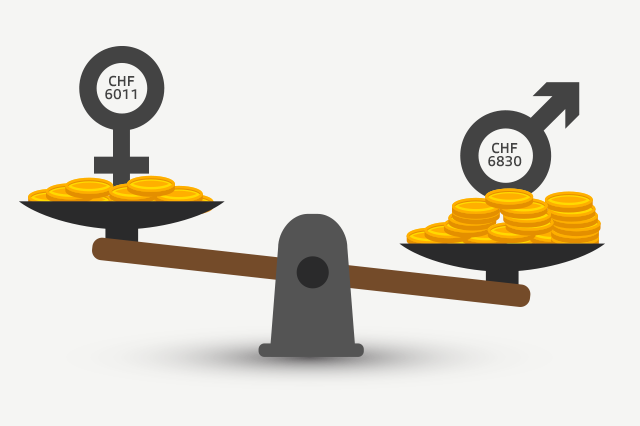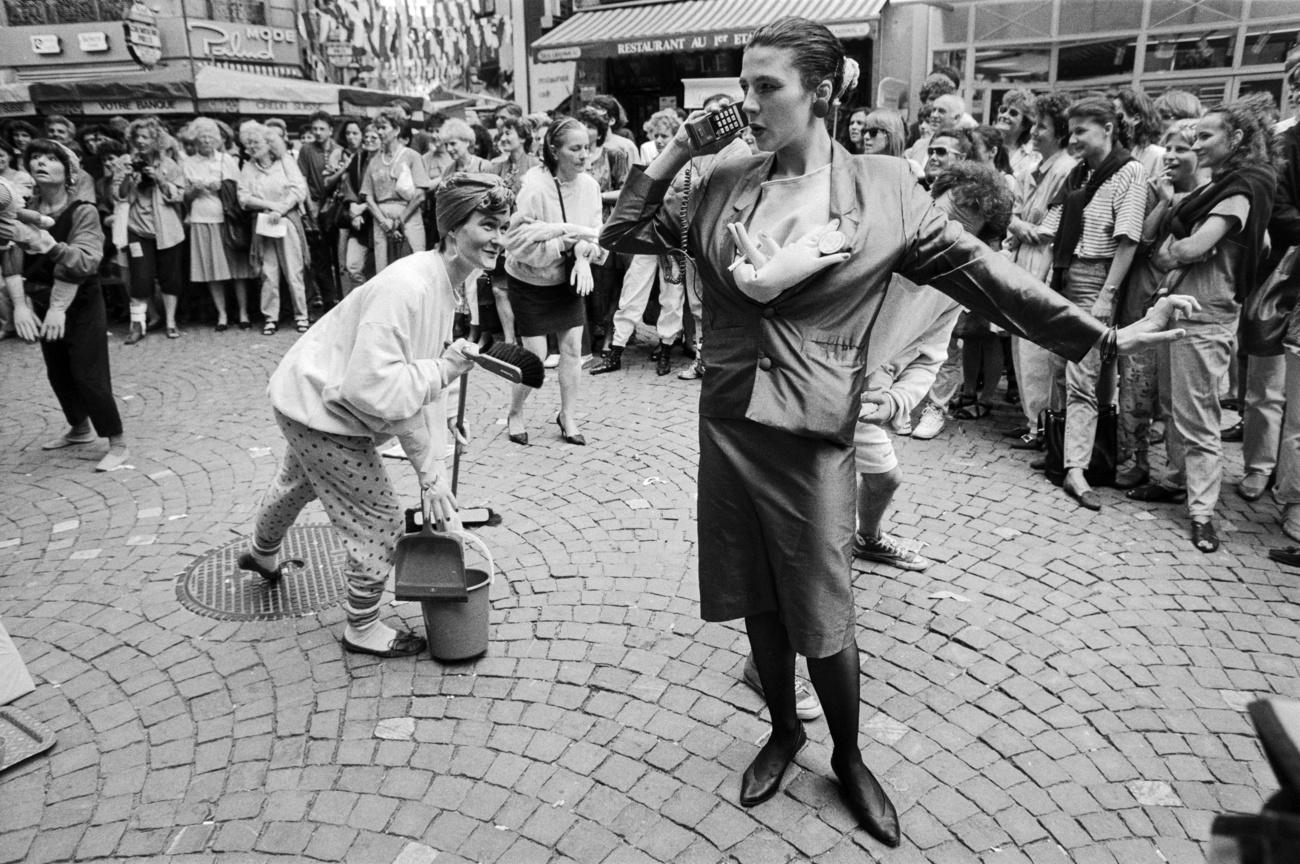
Minding the gap between the sexes in Switzerland

In Switzerland, equal rights for women and men are enshrined in the Federal Constitution – which is what voters wanted. But nearly 40 years after the popular vote of June 14, 1981, the goal of equality has yet to be achieved. Here are five key indicators illustrating day-to-day gender inequality in Switzerland.
“Men and women have the right to equal pay for work of equal value,” states the constitutional article on equal rightsExternal link. The law also expressly prohibits any on-the-job gender discrimination – especially with regard to wages.
The official statistics, however, show a completely different reality. In 2016 (latest available data), the standardised median gross monthly wage in Switzerland was CHF6,011 ($6,051) for women and CHF6,830 for men, a difference of 12%.
In the private sector alone, the difference was even greater. There, women earned 14.6% less than their male colleagues. Only part of this gap could be explained by objective factors such as differences in education levels, the number of years of service or the role within the company:
There is an enormous gender gap in terms of workloads. Unlike men, the majority of employed women work part time. This often means that women have a lower wage level and are unable to pursue a career.
The main reasons why women choose part-time work are to care for their children, followed by other family responsibilities. Men working part time, on the other hand, are pursuing an apprenticeship or course of study, or are simply not interested in full-time work. This difference is reflected in the unequal distribution of domestic work, which women still do the bulk of:
Low wages, part-time work and time off for motherhood continue to put women at a disadvantage after retirement. Their average monthly pensions from Old-Age and Survivors’ Insurance, and especially from occupational pension plans, are lower than those of men:
Gender inequality extends beyond the home and the workplace. Women and men are also unequally represented within political institutions:

More
Why Swiss women are back on strike today
Translated from German by Susan Misicka

In compliance with the JTI standards
More: SWI swissinfo.ch certified by the Journalism Trust Initiative
































You can find an overview of ongoing debates with our journalists here . Please join us!
If you want to start a conversation about a topic raised in this article or want to report factual errors, email us at english@swissinfo.ch.